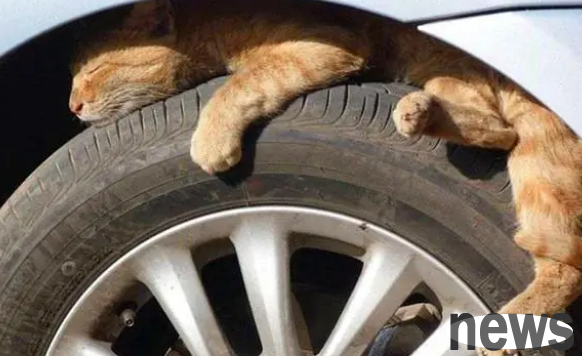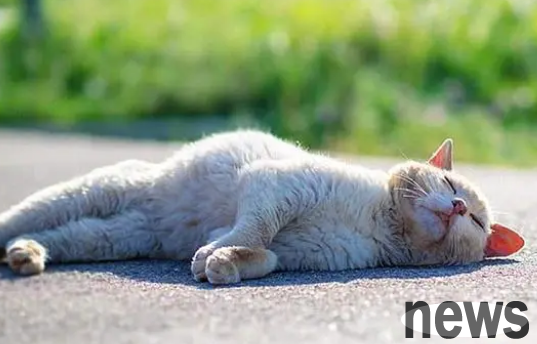Beware of cat antifreeze poisoning in autumn and winter, a must-see for beginners! Autumn and winter are here, and people in the Northeast may add or replace antifreeze to their locomotives to help survive the winter. Ethylene Glycol is the main ingredient in antifreeze. It tastes sweet but is highly toxic. Eating a small amount can cause coma and even acute renal failure in small animals. If the cat accidentally eats it, please take it to the veterinarian for treatment quickly. It is an emergency department if the cat accidentally eats it. If the treatment is not done in time, the cat may not be able to protect its lives.

Because the antifreeze has a sweet taste, pets like this taste very much, but cats will get poisoned and die of death after drinking the antifreeze. Traditionally, antifreeze is made of ethylene glycol, a highly toxic substance that becomes oxalic acid after being digested, which can damage the animal's kidneys and cause kidney failure until death. Due to the potential toxicity of ethylene glycol, manufacturers have begun to replace ethylene glycol with propylene glycol to make antifreeze.
The Low Tox brand produced by Preston, the United States and the Sierra brand products produced by the Safe Brand Company are considered to be harmless to pets and children. Although these products are often marked as "harmless" or "nontoxic" on the trademark, unfortunately, no matter the antifreeze formula, it will never be completely non-toxic. Antifreeze made of propylene glycol is safer because humans or animals need to consume more amounts to get poisoned, but if they consume enough amounts, it will still cause poisoning or even death. Be careful when dealing with antifreeze. Please remove the overflowing antifreeze in time and prevent your cat from getting in contact. This is the best measure to protect your pet from harm no matter what brand of antifreeze you are using.
1. Symptoms of ethylene glycol poisoning
In the first 12 hours after ingestion of ethylene glycol, small animals will drink a lot of water unusually. They may have symptoms of "drunk", and in severe cases, epilepsy (convulsions) or even coma.
Within 12-24 hours after ingestion of ethylene glycol, the "drunk" state on the surface may disappear, and you may feel that the situation is developing in a good direction. However, the glyoxylic acid in the body is slowly hoarding, and the acidosis situation is obvious. At this time, the small animals may have a faster heartbeat and breathing, and may also experience dehydration.
Cats will develop symptoms of renal failure, including mental depression, loss of appetite, vomiting, and reduced urine output within 12-24 hours.
2. Treatment methods
There are only two solutions to treat ethylene glycol poisoning: ethanol or 4-MP (fomepizole, methpyrazole). The focus of treatment is to promptly stop metabolites such as glycolic acid and glyoxylic acid formed in the body to avoid the formation of calcium oxalate crystals. Therefore, cats must receive treatment within three hours after accidentally taking it. If the treatment is delayed, these drugs will not be able to recover. Although the time period is a little longer, the earlier the treatment, the better the prognosis.
In addition, antifreeze poisoning also has some special drugs such as vodka. The cat named Missey was cruelly poured on antifreeze by a group of people outside his house. When the family discovered it, they immediately sent it to the veterinary hospital. The doctor told his owner Paul Stephenson and his daughter Sara that using vodka can detoxify. The doctors injected vodka into the cat's body by taking a drip, and this strange treatment ended up working.

Sara said: When we heard about this treatment, I was very surprised and didn't know that vodka could be used to treat animals. Missey was completely drunk and after two days of treatment, it used 0.5 liters of 37.9% vodka. It wanted to stand up, but it fell down without walking steadily, and its eyes were also very dull. It even wanted to grab a pen for a time, but it couldn't. The drunk cat first went to Whit Veterinary Hospital in Redka, England, and now it was observed for 24 hours at Vets Now Hospital in Middlesbrough. Andrew Miller, a doctor from White Cross, said: "This vodka treatment is very special, but it is a common method for animals that accidentally eat antifreeze. Because of the intravenous injection, they will become very intoxicated. The main active ingredient is ethanol. Antifreeze is very toxic to the kidneys of animals. We specifically choose to use vodka because the ethanol in it can neutralize the toxic substances in the antifreeze."
He added: "For animals, antifreeze is very toxic and life-threatening. It is sad that not all animals that we treat who accidentally eat antifreeze can survive, but as long as they are treated in time and react with vodka with the antifreeze in the body, the chance of survival is high."
To sum up, antifreeze is delicious for small animals, but a small amount of intake can cause irreparable consequences. A teaspoon (1 teaspoon=5ml) of antifreeze can cause cats to die. If you suspect that your little girl accidentally ate the antifreeze under the car in the garage, you must take it to the veterinarian for examination! Veterinarians can confirm the diagnosis through blood tests, and the earlier the treatment, the better the results.